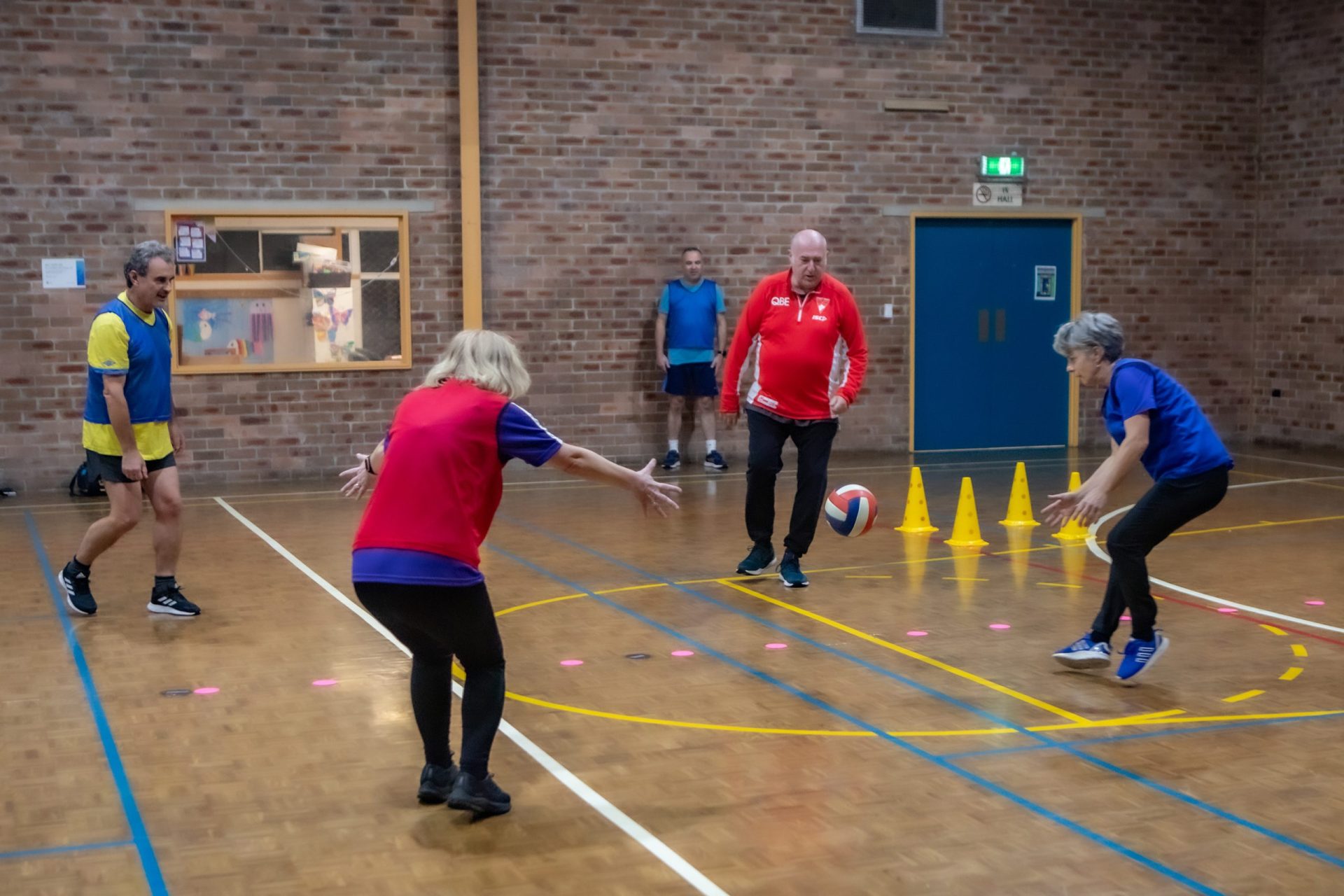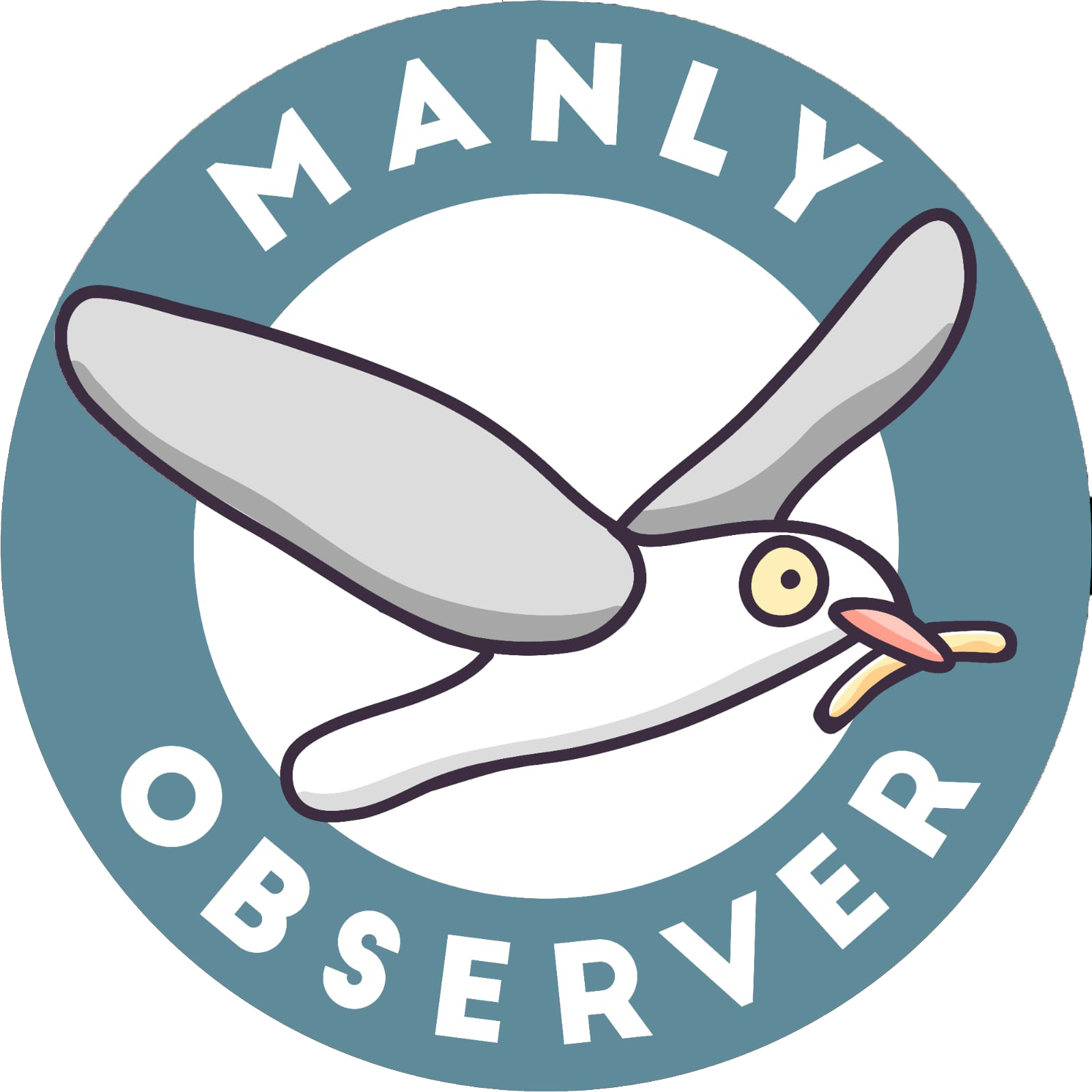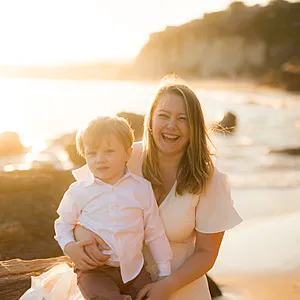Marijana Marinic has invented not one but three new ball games, FortBall, DodgeFort and PoolFort. One of them, FortBall, is now being played weekly at Seaforth Community Centre.
The Northern Beaches is the only place in Australia where her games have been trialled, and in October 2023 Marijana plans to introduce FortBall to local schools.
Manly Observer enjoyed watching an evening FortBall tournament among friends in Seaforth and spoke to enterprising innovator Marijana, a mechanical engineer by trade who is studying a Diploma in Sport and Recreation.
Marijana’s unique ball sports have been patented at Intellectual Property Australia (IP Australia) as “Central Target Zone System”.
The games are described online: “Two Forts are under siege – on a sports court. The knights need to defend their Fortress – and attack the other. One ball is the only weapon.”

For the basic rules of FortBall that Marijana devised, players line up around the edge of a rectangular court, which is divided in half, with the equivalent of a goalkeeper at the centre of each half.
Each keeper protects a ‘fort’ in the middle of their team’s sector, which consists of four equidistant plastic road cones (commonly called witches’ hats).
One round football is used and all players kick it back and forth, each with the intention of knocking over their opponents’ fort while the keeper defends their team’s fort.
A point is scored each time a cone is struck by the ball. The first team to reach ten points wins.
The weekly FortBall games in Seaforth – do they require a referee to enforce the rules, and is that the only place where it is currently played?
“At the moment we play it just socially, self-refereed,” Marijana replied. “The game is easily self-refereed because the rules are simple, everybody stays in their zone and there is no contact.
“We are mostly people from former Yugoslavia, but we would love to bring this sport to the wider community… Yes, FortBall is only played on the Northern Beaches and nowhere else in the world… I did start presenting DodgeFort (or Dodgeball Spin) in afterschool care in a few primary schools, just before the covid hit us, then everything stopped.”

When was the first game of FortBall played?
“About 18 months ago at PCYC Dee Why,” Marijana said. “After a group of my friends and I had a Pilates session, I asked them if they wanted to try this new game. We marked the field, put our water bottles in the centres as targets and played. They liked it a lot and we started playing it, usually outdoors.”
What is the difference between playing FortBall outdoors and indoors?
“We have to have ropes or something to mark the fields when outdoors,” Marijana said. “In summer when the days are long we play on the grass. Now that we booked the Seaforth Hall, we have the lines already there and we can play after work, when it’s dark.”
FortBall recommends 8 – 24 players. What’s the most amount of people she’s had playing?
“We played with minimum 3 people on a team,” she recalled. “We also played with 10 per team. Ideally there would be 4-7 people per team. That means 1-2 players positioned behind each line and only 1 defender per team.
“If we had 24 regular players, we would make six teams of 4 – and there we have a whole league! In Seaforth hall we can play 2 games simultaneously. The beauty of the FortBall structure is that it’s flexible and balanced. For a formal competition we would play on time: 2 x 25-minutes games.
“When we have enough players interested, we’ll make a FortBall Fun League,” she promised..

Origins
Ball games of many different variations have been around since the dawn of time, including cuju in China, episkyros in Greece and harpastum in Rome, all from BCE.
Ball games probably began when our distant ancestors came down from the treetops and discovered that, unlike dropping a rock on a hungry lion, you could kick or throw something soft at an opponent and they wouldn’t suffer a grave injury.
Thereafter, it was a matter of arguing the shape of the ball – oval or round?! – and making it from a material that, unlike fruits or living animals, wouldn’t disintegrate or run away.
In their competitive team game of Marngrook, southeast Australian Aboriginals used a stuffed possum skin or a kangaroo testicle as a ball.
Incidentally, Marngrook directly inspired Aussie Rules football. The pre-colonial spectator sport relied on one side kicking a ball/testicle between their own players and denying it to opponents, whilst scoring free kicks by catching ‘mumarki’ – like ‘marks’ in Aussie Rules.
Australian Rules football founder Tom Wills, who formally codified the sport on 17 May 1859, socialised with the Djab Wurrung Aboriginals, spoke their language and witnessed Marngrook being played prior to inventing his game.
Marijana explained her three games were not borrowed from sports in the feudal Middle Ages, despite the respective ‘forts’ in each facing constant attack.
“It’s not derived from any Medieval games,” she said, “but I thought it looked like a siege (both teams have a player under siege from 4 sides, while the attackers are behind the ‘wall’). And I thought it looked cool to have those knights shown on the FortBall website and that kind of vibe!
“However, I am imagining having a ‘Medieval’ tournament of FortBall,” she mused, “with all the costumes and all… maybe one day.”

So how did Marijana come to invent FortBall? Were PoolFort and DodgeFort devised at the same time?
“First I invented a new 4-a-side version of Dodgeball (DodgeFort),” she revealed, “because 2-a-side Dodgeball was a favourite game of my childhood and I realised that kids in Australia never played it.
“I patented it at IP and I started a little business of Dodgeball birthday parties (EmberZone Dodgeball). It made many kids and parents happy.
“But there was once a boy who at the end of the party asked, ‘Can we play soccer now?’ That got me thinking. So, from the concept of 4-a-side Dodgeball and soccer (which I also used to play), I came up with FortBall. And then I realised FortBall can safely be played by people of my age (over 50) as well as any kid of gentle nature or anybody who likes a truly non-contact game.
“I realised that the same concept of targets in the centre of the half-fields and players outside of the fields (except for the defenders), can be applied to many other sports like basketball, hockey and even water polo – leading to PoolFort.”
Has she played PoolFort anywhere?
“No. I’m hoping that somebody who is into water polo, including developing programs for less athletic and non-aggressive swimmers, might be interested in looking into it. It can be a great non-contact pool game…
“Organizing these games takes a lot of my time, but I believe that it’s a good thing and hope to spread the goodness further.”
FortBall webpage https://fortball.au/
FortBall, DodgeFort + PoolFort webpage www.siegeway.com
FortBall film clip https://youtu.be/i2mniNSuRuk
Games on Wednesday eves, 7-9pm Seaforth Community Centre, corner of Baringa Avenue &, Koobilya St, Seaforth.
Contact: info@fortball.au



